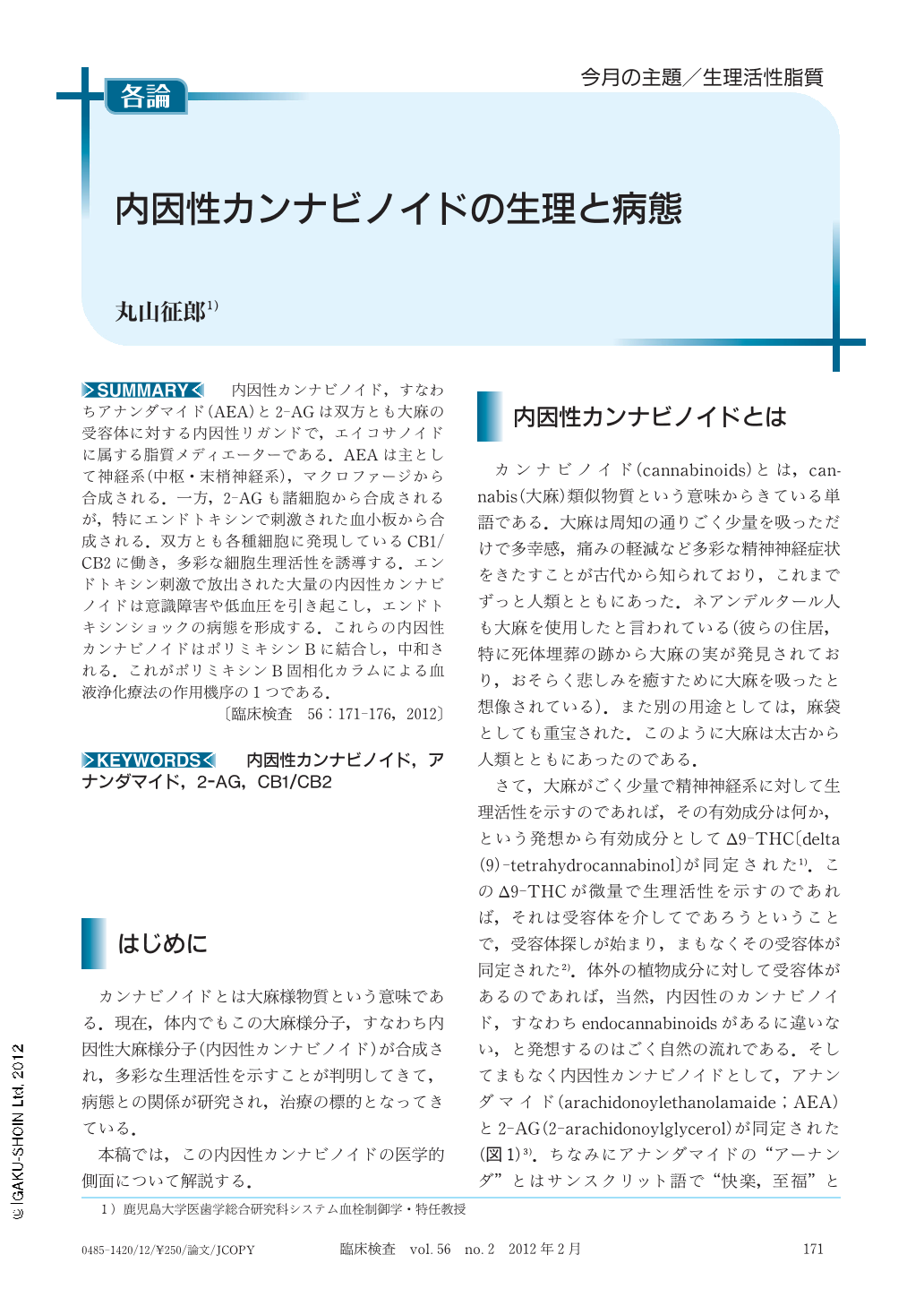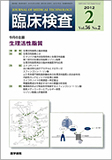Japanese
English
- 有料閲覧
- Abstract 文献概要
- 1ページ目 Look Inside
- 参考文献 Reference
内因性カンナビノイド,すなわちアナンダマイド(AEA)と2-AGは双方とも大麻の受容体に対する内因性リガンドで,エイコサノイドに属する脂質メディエーターである.AEAは主として神経系(中枢・末梢神経系),マクロファージから合成される.一方,2-AGも諸細胞から合成されるが,特にエンドトキシンで刺激された血小板から合成される.双方とも各種細胞に発現しているCB1/CB2に働き,多彩な細胞生理活性を誘導する.エンドトキシン刺激で放出された大量の内因性カンナビノイドは意識障害や低血圧を引き起こし,エンドトキシンショックの病態を形成する.これらの内因性カンナビノイドはポリミキシンBに結合し,中和される.これがポリミキシンB固相化カラムによる血液浄化療法の作用機序の1つである.
Endoncannabinoids, anandamide, arachidonoylethanolamide (AEA), and 2-arachidonoyleglycero (2-AG) are kinds of lipid mediators and also belong to eicosanoids. They act on CB1 and CB2 receptor which is expressed in many kinds of cells, and induce various cellular functions. AEA is mainly synthesized in the nervous system and induces several neuropsychological functions including pain, mental and consciousness conditions. 2-AG is mostly synthesized and released from platelets upon their stimulation with endotoxin, and play roles in the pathogenesis of endotoxic shock. These endocannabinoids bind to polymxin B and are neutralized in their functions. This is one of the therapeutic roles of polymxin B immobilized column hemoperfusion therapy.

Copyright © 2012, Igaku-Shoin Ltd. All rights reserved.


